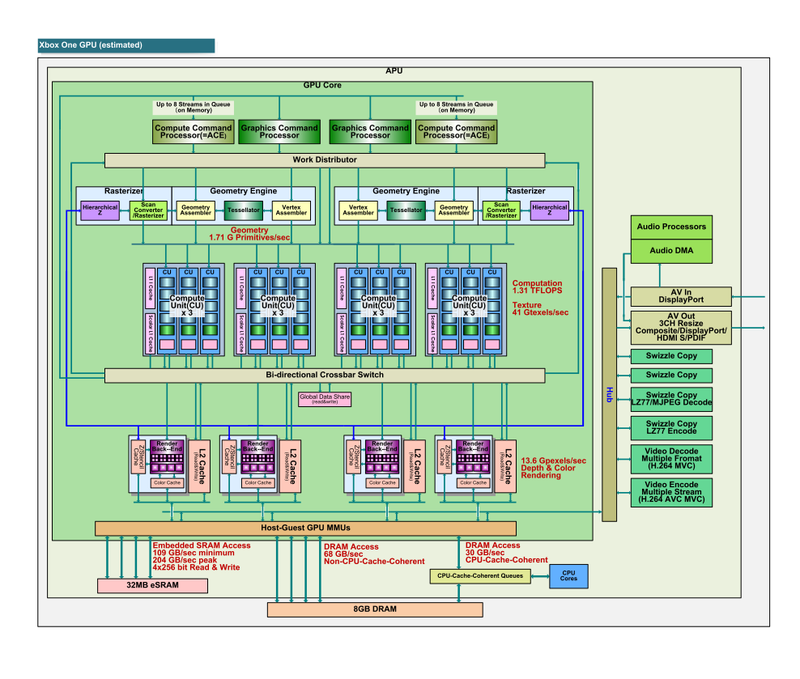Betanumerical
Veteran
GCN may have more features than what DX11/11.1/11.2 requires, but the "+" in "DX11.1+" refers to additional features in XB1 HW/SW compared to standard DX11/11.1/11.2 (according to John Sell at Hot Chips conference) and his recent article:
Also, it may not be related to technical hardware discussions in this thread (since it won't add any technical knowledge to our discussion), but I think Spencer once said that there are some DX12 features in XB1 (he didn't want to talk about them, but somehow confirmed their existence).
(listen from 28:00)
The two bolded sentence fragments practically mean the same thing.
GCN has more features then DX11/11.1/11.2 therefore the + in DX11.1+ are the features that GCN supports that DX11.1 doesn't require.
There are some software DX12 features in the XB1 API, and there has been for a while. This doesn't mean the GPU contains any DX12 hardware.





